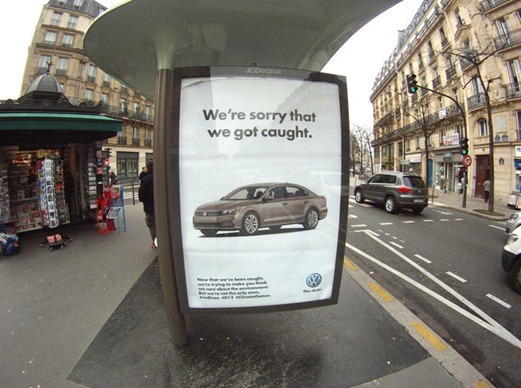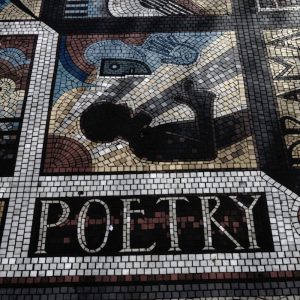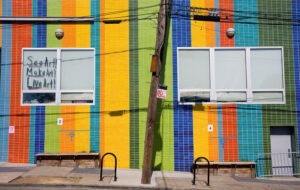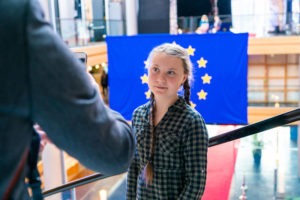
November 30, 2015; NPR, “The Two-Way” and Gizmodo
Eighty artists from around the globe took to the streets of Paris last weekend to plaster over 600 corporate ad spaces owned by ad firm JCDecaux with pieces of protest art to air fears about climate change.
According to NPR, the protesters have “gotten much attention,” particularly because “the French government—in response to the terrorist attacks—banned mass gatherings.” The “subversive art campaign…is replacing outdoor advertising spots with art posters indicting big corporations for their role in climate change.”
In doing so, world leaders were bombarded with images challenging the corporate sponsors of the United Nations summit and with art installations around the city designed to remind leaders the world is watching closely.
Calling the action “subvertising,” the initiative was mounted by the UK organization Brandalism, which since 2012 has been mounting a “revolt against corporate control of the visual realm” and claiming to be running “the biggest anti-advertising campaign in world history.” According to the World Post, Brandalism is looking to highlight the hypocrisy “of allowing corporations to sponsor the climate talks when their products contribute to global environmental problems such as over-production, pollution and greenhouse gas emissions.” Brandalism Spokesperson Joe Elan said in the press release, “By sponsoring the climate talks, major polluters such as Air France and GDF-Suez-Engie can promote themselves as part of the solution—when actually they are part of the problem.”
Resulting media coverage has shown a variety of posters, but one that has garnered the most attention, and which NPR called “especially damning,” targets Volkswagen and the recent revelations that the company had circumvented government emissions standards. The ad reads, “Now that we’ve been caught, we’re trying to make you think we care about the environment.”
.@BrandalismUK take over bus stop ads in Paris with shocking #climatechange images #COP21 https://t.co/soW3w2iaVS pic.twitter.com/jH69vLgwOV
Sign up for our free newsletters
Subscribe to NPQ's newsletters to have our top stories delivered directly to your inbox.
By signing up, you agree to our privacy policy and terms of use, and to receive messages from NPQ and our partners.
— Greenpeace (@Greenpeace) December 3, 2015
Other corporate targets include Air France and Motorola.
According to Gizmodo, there’s also been an organized art festival in Paris “devoted to climate change installations, called ArtCOP21, responsible for work from street artists like JR and Shepard Fairey to the filmmaker Darren Aronofsky. […] Together they’ve transformed Paris with work that ranges from beautiful, infuriating, and sad, to very, very clever.”
One, entitled The People’s Climate March, depicts “20,000 pairs of shoes, arranged in perfect lines around the Place de la République.” It’s meant to stand in for the protesters who couldn’t march in Paris. Another, called The Standing March, at the Assemblée Nationale, depicts the “intense stares of 500 strangers from around the world” and is “a piece by the street artist JR and the filmmaker Darren Aronofsky.” Together, they took 3D scans of 500 different people and tiled them to create a “dynamic, moving audience on the façade of the neoclassical landmark.” They say the piece is meant to “remind leaders that the world is watching as they gather to negotiate a deal aimed at keeping global warming below 2°C.”
In another art installation “not far away from the Eiffel Tower, on the side of the American Center for Art & Culture, the artist Andrea Polli is using projection mapping to show the exact levels of air pollution in the city for a piece entitled Particle Falls.”
The point of having these strong artistic messages front and center during the summit, rather than simply corporate product ads, is that it gives voice to the masses who will be impacted by the decisions made, rather than, as Elan says, to those who just “have the most amount of money” to advertise.—Susan Raab













